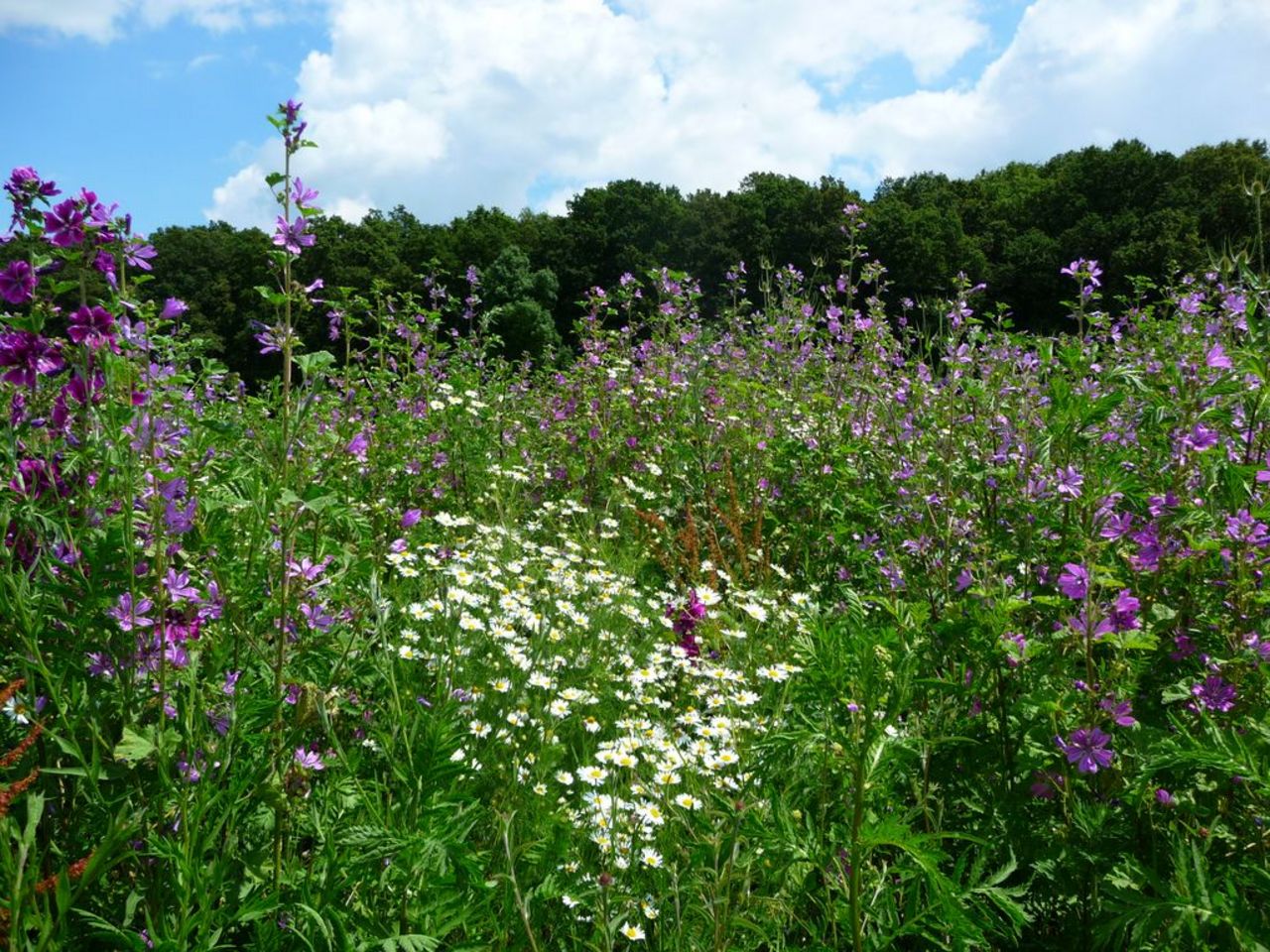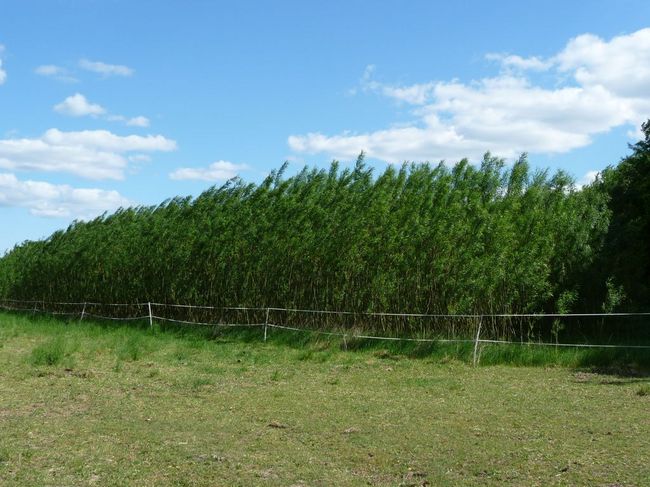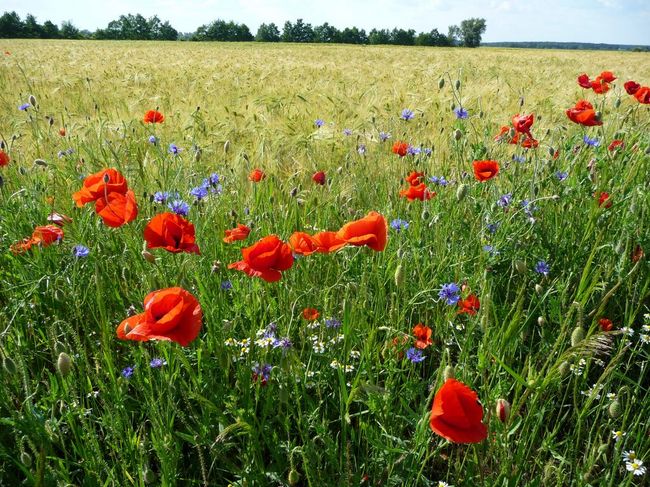Project
Nature conservation in ecological focus areas (OEVForsch)

Nature conservation in ecological focus areas – practical handbook and scientific support (OEVForsch)
Within the framework of the Common Agricultural Policy farms with more than 15 ha arable land had to manage 5% of their area as an ecological focus area. How have these areas been used previously? How valuable were they for nature protection?
Background and Objective
Biodiversity in agricultural landscapes declines significantly. The reform of the Common Agricultural Policy (CAP) of the European Union from 2013 focused on ecological aspects or on “greening”, respectively, of the first pillar (direct payments to farmers). From 2015 to 2022, farmers had to provide ecological focus areas (EFA). Farms with more than 15 ha arable land had to declare 5% of this area as EFA. For national implementation, Germany selected from an extensive list of different EFA types. Some of them allowed an agricultural usage (e.g., short rotation coppice, catch crops) and some did not (e.g., fallow land, landscape elements).
There was a controversial discussion on the ecological effectiveness of EFA. Also the proportionateness of the high administration and monitoring effort of these measures was disputded. The European Commission presented its ideas for the further development of the CAP in 2018. One focus was how the CAP can better contribute to the conservation of biological diversity as well as the protection of water, climate and soil. Based on this possible changes from 2018 onwards should be decided.
Within the project we evaluated how effective ecological focus areas were for nature protection in the German agricultural landscape and gave practical recommendations for the future CAP. We presented options to improve the efficiency of the EFA.
Target Group
Ministries of agriculture and environment, farmers, consultants, official nature conservation, agricultural administration, European Commission
Approach
In the first step we collected and evaluated already existing knowledge on the ecological quality of EFA and on their implementation in other European countries. In addition, we analyzed legal and funding policy backgrounds.
Furthermore, plot-specific field studies as well as interviews with farmers have been conducted in four different arable farming regions in Germany to evaluate the ecological meaning of EFA under different site conditions. We developed tools for a monitoring system of greening effects.
Based on the administrative data of the federal states we determined which EFA types have been declared and which environmental and operational conditions were relevant. Furthermore, we wanted to clarify to which extent already existing landscape structures were integrated or new ones created. The latter was not possible based on the existing data.
Data and Methods
The analysis of literature, studies and other projects together with plot-specific field studies on flora and fauna, farmer interviews in different regions, as well as the analysis of statistical data on EFA choice and declaration gave us a comprehensive understanding of where and how EFA were implemented and how effective they were for nature protection. Based on this knowledge we derived recommendations for policy and practice aiming for the most favorable relation of environmental benefits and costs.
Our Research Questions
How did farmers implement the new EFA regulations and what influenced their decision?
What role dod consultation and interactions with other instruments (agri-environmental and contract-based nature conservation measures, legal requirements) play?
What was the additional conservation value of the EFA implemented under the conditions at that time?
Which monitoring approaches were suitable for evaluating the nature protection quality of EFA?
What experiences were there in terms of administrational expenses and legal certainty?
How was it possible to enhance the benefit of EFA ?
How could economically favorable options for farmers be designed to also create benefits for nature protection?
Results
The project showed how operation- and region-specific factors influence the choice and implementation of EFA and their ecological effectiveness, besides political guidelines. Further information are documented in the final report and the other publications.
Links and Downloads
Thünen-Contact

Involved Thünen-Partners
Involved external Thünen-Partners
- Institut für Ländliche Strukturforschung (IfLS)
(Frankfurt am Main, Deutschland) - Institut für Agrarökologie und Biodiversität (ifab)
(Mannheim, Deutschland)
Funding Body
-
Federal Agency for Nature Conservation (BfN)
(national, öffentlich)
Duration
4.2015 - 12.2016
More Information
Project funding number: FKZ 3514824100
Funding program: BMUB - Umweltforschungsplan
Project status:
finished
Publications to the project
- 0
Nitsch H, Röder N, Oppermann R, Milz E, Baum S, Lepp T, Kronenbitter J, Ackermann A, Schramek J (2018) Ökologische Vorrangflächen: Gut gedacht - schlecht gemacht? Natur Landsch 93(6):258-265, DOI:10.17433/6.2018.50153583.258-265
- 1
Nitsch H, Röder N, Oppermann R, Milz E, Baum S, Lepp T, Kronenbitter J, Ackermann A, Schramek J (2017) Naturschutzfachliche Ausgestaltung von Ökologischen Vorrangflächen. Bonn: BfN, 192 p, BfN Skripten 472, DOI:10.19217/skr472
- 2
Lakner S, Röder N, Baum S, Ackermann A (2017) The German implementation of Greening - effectiveness, participation & policy integration with the agri-environmental programs : contributed poster to the XV EAAE Congress ; Towards Sustainable Agri-Food Systems: Balancing between Markets and Society ; Munich, Sept., 13th-15th, 2017. München, 12 p
- 3
Lakner S, Röder N, Baum S, Ackermann A (2017) What we can learn from the German implementation of greening - effectiveness, participation and policy integration with the agri-environmental programs ; Vortrag anlässlich der 57. Jahrestagung der GEWISOLA (Gesellschaft für Wirtschafts- uns Sozialwissenschaften des Landbaues e.V.) und der 27. Jahrestagung der ÖGA (Österreichische Gesellschaft für Agrarökonomie) "Agrar- und Ernährungswirtschaft zwischen Ressourceneffizienz und gesellschaftlichen Erwartungen", Weihenstephan, 13. bis 15. September 2017 Weihenstephan, 13. bis 15. September 2017 . GEWISOLA, 13 p
- 4
Nitsch H, Röder N, Oppermann R, Baum S, Schmarek J (2016) Naturschutzfachliche Ausgestaltung von Ökologischen Vorrangflächen : Praxishandbuch. Frankfurt am Main: IflS, 17 p

![[Translate to English:] [Translate to English:]](/media/_processed_/2/0/csm_LV_Bei_Hornburg_Quelle_Johanna_Fick_neu_da89674833.jpg)
![[Translate to English:] [Translate to English:]](/media/_processed_/2/0/csm_LV_Bei_Hornburg_Quelle_Johanna_Fick_neu_3aae309567.jpg)


![[Translate to English:] Logo des Bundesministerium für Ernährung und Landwirtschaft](/media/allgemein/logos/BMEL_Logo.svg)